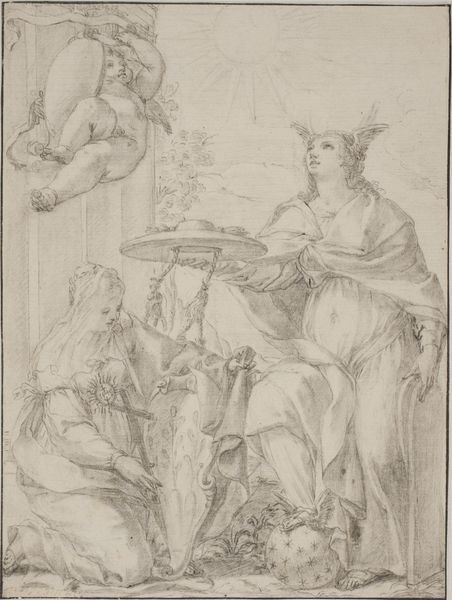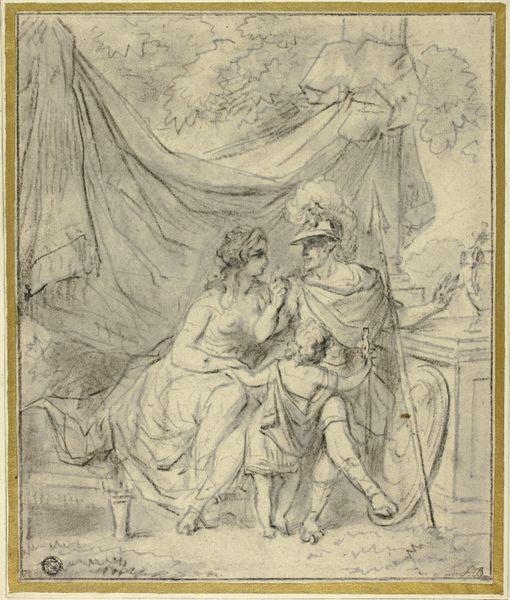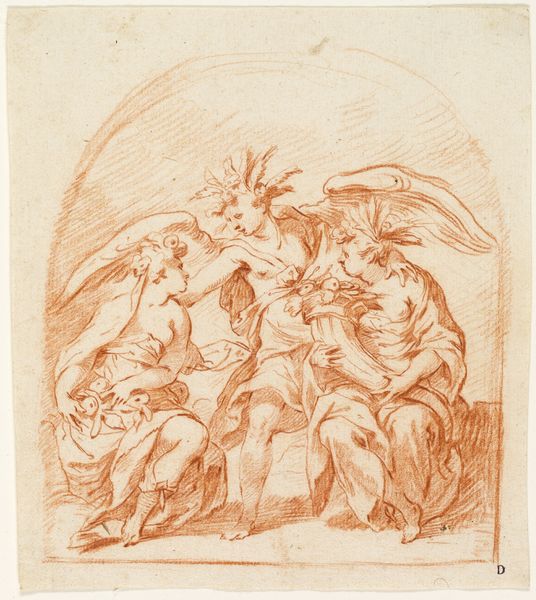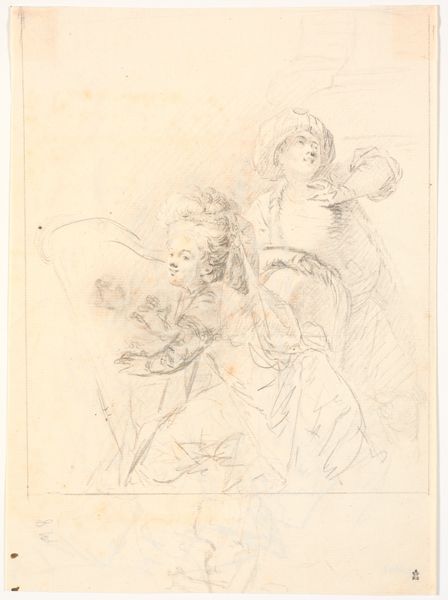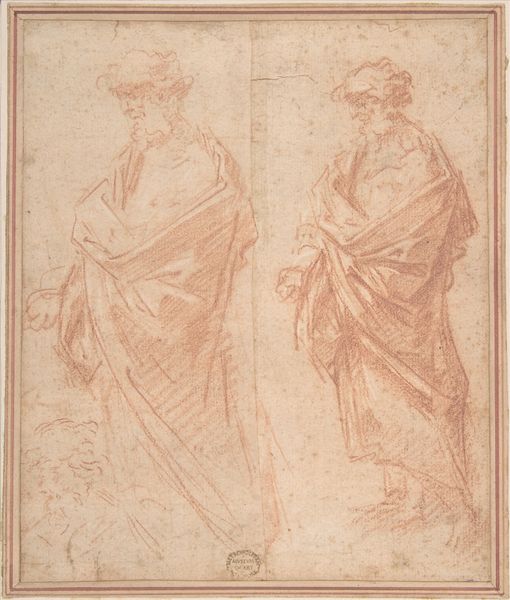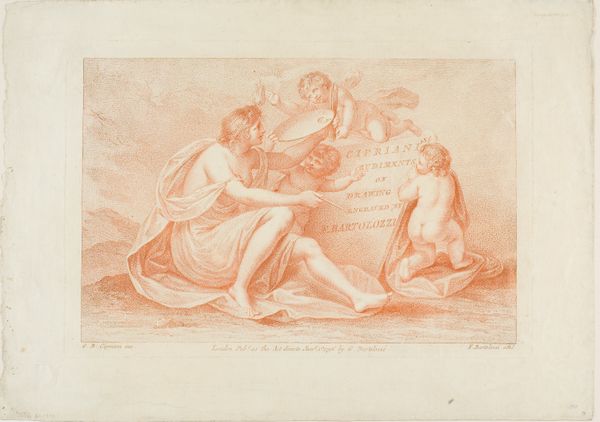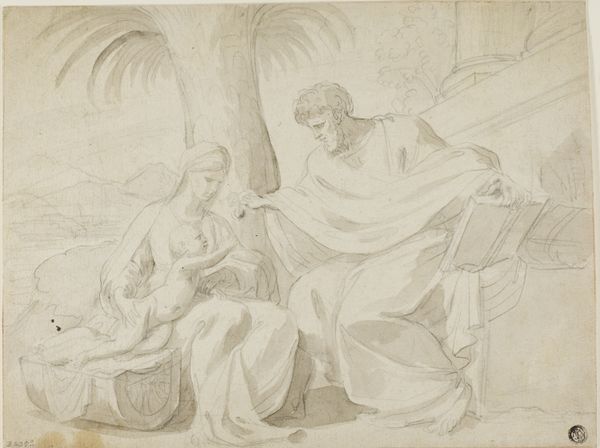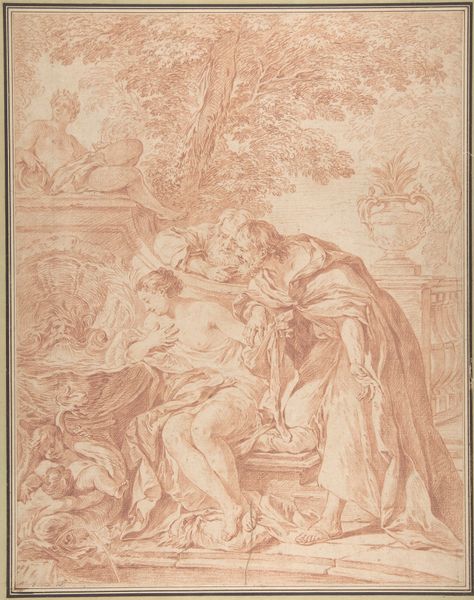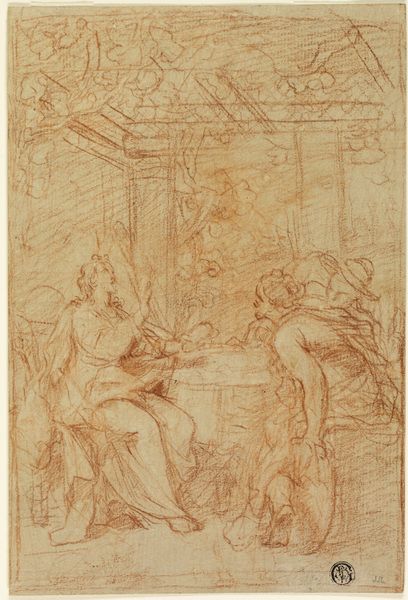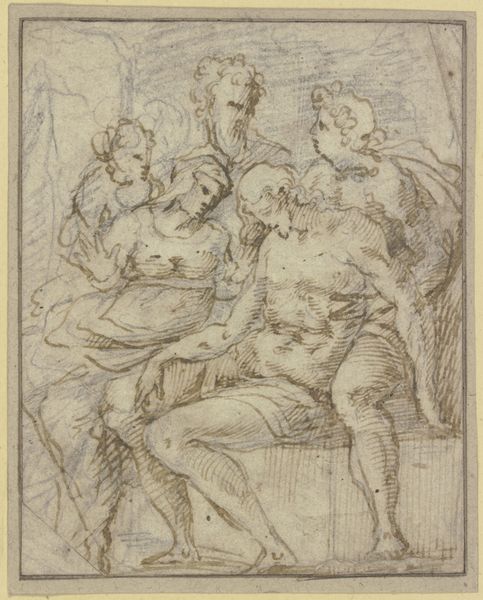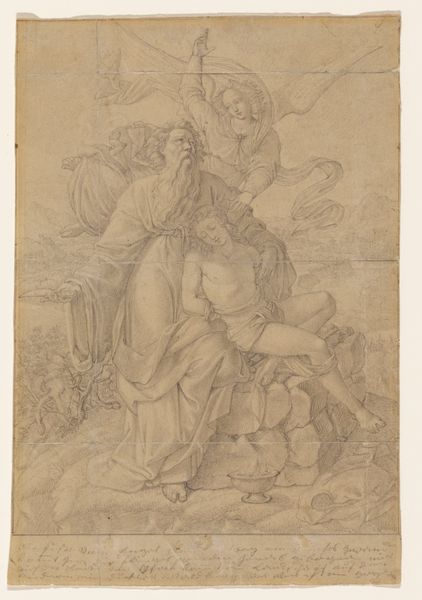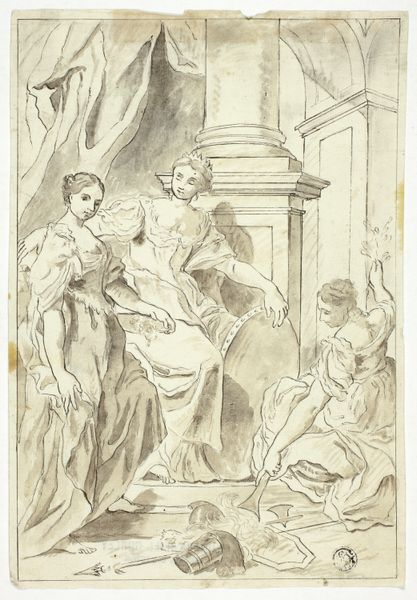
Allegorical composition with three female figures in front of a picture on an easel, one with a mask at her feet, another accompanied by a swan 1700 - 1749
0:00
0:00
drawing, paper
#
drawing
#
allegory
#
figuration
#
paper
#
11_renaissance
#
history-painting
Dimensions: 232 mm (height) x 217 mm (width) (bladmaal)
Curator: Here we have "Allegorical composition with three female figures in front of a picture on an easel, one with a mask at her feet, another accompanied by a swan." Dating from 1700-1749, this intriguing drawing comes from an anonymous artist. Editor: It feels incomplete, somehow, like a fleeting thought captured on paper. I’m immediately drawn to the figures – they have a delicate strength, draped in classical garb. The color gives warmth, but the sketchiness makes it feel urgent. Curator: Indeed. Its allegorical nature begs the question: What narrative is unfolding? The mask at the foot of one figure, coupled with the swan beside the other, hints at layered meanings related to deception, beauty and truth. Given the period, classical learning would have been immediately accessible to viewers. Editor: Exactly. Masks often represented theatricality and social artifice, prevalent concerns as political structures shifted in Europe and people actively participated in new social systems. How were the female figures intended to be read here? Are they embodying Justice or Liberty, or perhaps allegorical personifications of abstract virtues and sins? Curator: The easel in the background suggests this might even be an artist reflecting on their process. Artists throughout history would incorporate cultural markers and popular social allegories in their portraits to comment on social trends in any period. How might this unknown artist use symbols such as a swan or a theatrical mask to talk about social norms in the renaissance period? Editor: Precisely, a time where representation and image control were paramount, especially for women navigating patriarchal systems. The sketch, perhaps incomplete to modern eyes, leaves space to consider all possibilities of women, both on stage and off. This is far beyond simple visual communication. This is how art intervenes in cultural awareness! Curator: Agreed, its rough strokes tell volumes about the artist’s attempt to weave a cultural web with visual metaphors for people. A visual statement reflecting that period and it’s perception in real-time. Editor: What is ultimately amazing here is that even with an unknown artist from a distant century, we can look to history for reflections on contemporary values, concerns, and political trends by viewing this artwork. Curator: Precisely. By analyzing art, and how museums are used, can help inform socio-political climates. Editor: By digging into visual communication and its meanings, it has the capacity to challenge power relations even to this day.
Comments
No comments
Be the first to comment and join the conversation on the ultimate creative platform.
